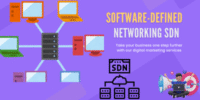Best Practices Cybersecurity: Safeguarding Your Digital World
Published: September 21, 2025
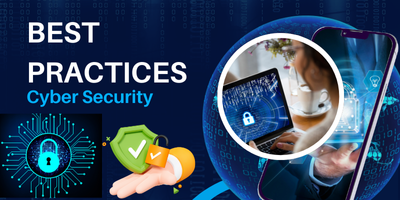
Best Practices Cybersecurity it is also crucial to note that in the modern world, where numerous personal and business transactions are performed online, the significance of cybersecurity has taken first priority.All the online transactions, personal information, and business-sensitive data are vulnerable to different types of cyber threats.
The best practice in terms of cybersecurity will be needed to protect our organizations and ourselves against the advanced forms of cybercrimes. Gone are the days when cybersecurity was viewed as the primary role of the IT department, because all internet users have a role to play today. Here, we will describe what must be done to install best practices in the practice of cybersecurity, and the intention is to minimize your exposure to the risk and enhance your digital defensive stance.
The list of cybersecurity risks, including ransomware, breaches, phishing attacks, and hacks, may be stifling. The positive aspect is that there exist some steps that, once taken, can help decrease the risks of being victimized in cybercrime. Cybersecurity strategies are essential to the cybersecurity of any internet user and any business. The article is aimed at assisting you in putting in place measures that will facilitate the implementation of a security plan to ensure that sensitive information is not compromised and secure online operations are carried out.
This paper shall shed light on the best practices in cybersecurity with an integration of their practical usage in daily life. We will discuss the use of strong passwords, multi-factor authentication, and network protection, among others. Then, it is time to start protecting your online existence against cyber threats.
Table of Contents
- What is Cybersecurity?
- Best Practices for Cybersecurity
- Strong Passwords and Multi-Factor Authentication
- Regular Software Updates
- Secure Wi-Fi Networks
- Back Up Your Data
- Employee Training and Awareness
- Best Practices for Information Security
- Data Encryption
- Virtual Private Networks (VPNs)
- Tools for Cybersecurity
- Antivirus Software
- Password Managers
- Encryption Tools
- Real-World Examples of Cybersecurity Best Practices
- Conclusion
1-What is cybersecurity?
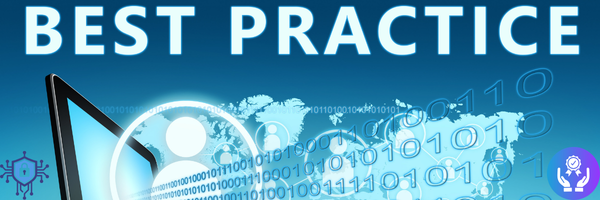
Best Practices Cybersecurity is the protection of systems, networks, and data against digital attacks. Any kind of theft and damage should be prevented. Cybersecurity involves the prevention of any unauthorized access to or destruction of personal information and sensitive business information. Best practices, technologies, and strategies should be adhered to to ensure the prevention of cyber attacks that involve hacking, phishing, and malware.
Before, some may have believed that cybersecurity is only relevant to large organizations or information and technology experts; it is relevant to anyone who uses the internet. Although you might be an online shopper, an informal social media user, or a small business owner, you can use and adapt the functionalities of cybersecurity, which is created to reduce online threats and secure your online resources. To put it in a nutshell, cybersecurity refers to the combination of procedures and practices of detecting, evaluating, and addressing risks, as well as making sure that your data and systems remain confidential, intact, and available.
Best Practices Cybersecurity through the best practices of cybersecurity, an organization is not only a victim of any type of threat, but it is also defensive and protective in that it develops a digital platform that is difficult to breach. Such a strategy definitely minimizes the risks of an attack but even more limits the level of damage that can be incurred in case of an attack. The following is to analyze key habits of cybersecurity, which are imperative to all internet users.
2-Best Practices of Cybersecurity.
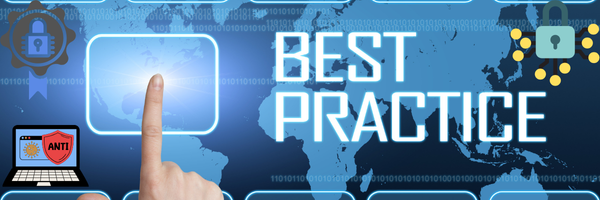
1. Passwords with Multi-Factor Authentication.
Best Practices Cybersecurity it is important to remember that one of the simplest and most effective ways of account and data protection is the use of strong passwords. An example of this is that the password should be alphanumeric with no fewer than 12 characters. Best Practices Cybersecurity avoid cliches. The passwords are also supposed to be user-specific. Passwords can be generated and deployed with the help of a password manager service.
Best Practices Cybersecurity multi-factor authentication (MFA) is another protection option, along with strong passwords. The hacker can have the passwords, though the possibility of hacking into the account is low without a second method of identity verification, like an account code delivered to the mobile or email account. This renders account cracking a challenging undertaking for the offenders.
2. Keeping abreast of software.
Best Practices Cybersecurity ,Cybercriminals are always searching for software that is not well secured, and the old systems are of top priority. An example is that with the absence of regular updates, software deficiencies and other critical marks remain unaddressed; hence, the user is probably being attacked by an unknown type of device. Best Practices Cybersecurity these attacks can be prevented by revising the operating system, applications, and other software that are security-related and device-related.
Best Practices Cybersecurity the large number of software programs enables the user to program them to automatically update, eliminating the manual process of searching through the software to identify the pending transactions. Conversely, when the software you are using fails to update on its own, then you should always consider checking the updates of the software, particularly when the software in question is central to your business or online activities.
3. Securing Wi-Fi Networks
Best Practices Cybersecurity it is hardly a secret that your Wi-Fi network has become one of the weak links in your defenses, so it is necessary to ensure that it is securely configured. You need to begin with the change of the default username and password of your routers. The default password is known to be easily guessable by intruders. Most routers have a default password. Select a very strong password, and ensure that it is secured by no less than WPA3.
You must make a guest network when you are hosting guests who need to have internet access. By doing that, the guests will have access to the internet without any access to or ability to compromise your devices and networks.
4. Back Up Your Data
Best Practices Cybersecurity cases of losing valuable files and folders are irreversible. Riding the bus to the Grand Canyon one late-summer afternoon and subsequently waking up in a taqueria in Tijuana is one of them; cyberattacks like ransomware are even more succinct. In order to ensure you are not caught in the same trap that I fell into, you ought to use the most common method of regular storage of your data. Keep a backup of all the information in the cloud and on external hard drives. Best Practices Cybersecurity it is effectively reassuring to have several alternatives in case of malfunction and loss of data, which is rare. They do not even need to be rationalized anymore.
In business-related cases, the active implementation of a disaster recovery plan and its integration into your cybersecurity portfolio also make sure that critical data can be conveniently recovered in a more or less timely manner in case of its loss due to a malicious attack or a critical system malfunction. This is expected to significantly decrease your overall time out, hence less disturbance to your work process and activities.
5. Employee Education and Sensitization.
Best practices cybersecurity as it has probably become obvious, the technology is quite safe, but the internal controls are extremely weak in the area of cyberattacks and are mostly susceptible to the carelessness of insider workers. In its turn, unremitting cyber training is necessary to make sure that the personnel can be responsive to the larger organizational strategies.
A well-trained group of workers is the first line of physical shield against cyberattacks. The motivation in keeping the promoted culture of the so-called security awareness assists in immensely practical terms in eradicating the likelihood of becoming a victim of extremely rudimentary cyberattacks.
3-Best Practices for Information Security
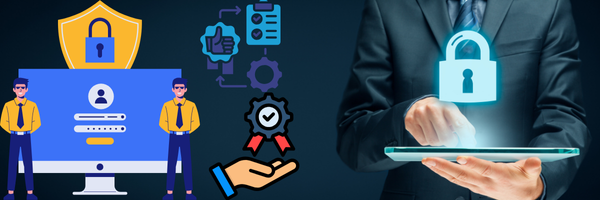
1. Data Encryption
Best practices cybersecurity Coding data to ensure that it cannot be accessed by others is called data encryption. The encryption of data on devices or during the transmission of information on the internet will make sure that, with the application of the correct encryption laws, if the information is intercepted, it cannot be read out.
It is very critical to properly encrypt sensitive information like financial records, customer information, and the proprietary information of the organization. Many gadgets come with encryption tools and other software that provide data security at rest and in transit.
2. Use of VPNs
Best practices cybersecurity using a VPN, a person can establish a secure and encrypted connection to the internet that cannot be intercepted in any way. This is crucial to free and open Wi-Fi connections, where hackers are most able to get the connection. VPNs conceal the IP addresses of the individuals who are accessing the VPN, hence ensuring the privacy of the online activities that are done. These are the best tools to be used when guarding sensitive data and browsing the internet by people who are working remotely or those on the go and need to seek sensitive information.
4-Tools for Cybersecurity
Antivirus Programs
Best practices cybersecurity no tool can provide a full-scale guarantee of full protection, but antivirus programs can contribute to the detection and removal of malware, ransomware, and other malicious programs on your devices. Ensure that your antivirus programs are up-to-date and are programmed to perform regular scans in an attempt to detect potential threats at an early stage.
Password Management Tools
Best Practices Cybersecurity based on the number of passwords that one manages nowadays, a password manager is necessary. Password managers are able to create strong passwords that are unique. This will also reduce the risk of reusing passwords and weak passwords.
Encryption Software
Best practices cybersecurity encryption software is necessary for people and companies dealing with sensitive data. Applications like BitLocker in Windows and FileVault in Mac can encrypt the hard disk of the computer in full, and also general applications like files and email can be encrypted. This is to make sure that the information stored on the device is not accessible to unauthorized individuals in case of a breach.
5-Real-World Examples of Cybersecurity Best Practices
Best practices cybersecurity XYZ Company: Company XYZ was capable of reducing the phishing-related cases by 40 percent after integrating and practicing multi-factor authentication and ongoing training on the topic of cybersecurity.
Sarah Online Store: Sarah connects to a personal VPN to access her Admin Panel, where any and all information about customers is safe, and she also protects any and all information safely in the event of a data breach.
Conclusion
Best practices cybersecurity with the increasingly digital world, the capacity to practice and implement cybersecurity is still important in mitigating potential risks to the information and systems under your possession or under your custody. Be it your desire to safeguard personal information of a sensitive nature, or as a company owner, sensitive data, any of the practices noted here would ensure that you have reduced chances of falling prey to cybercrime.
Best Practices Cybersecurity such measures can be strong passwords, encryption of employee data, and frequent updates of the software, among others. These are measures that are instrumental in putting your digital presence in place. Get familiarized with such practices, and not only do they stand to reduce the risks of a cyberattack being subjected to by you, but working jointly, they will have a higher likelihood of securing your online systems.
FAQs
1-What are the optimal approaches to cybersecurity?
Good passwords, encryption of data, and regular training of employees are some of the best practices for cybersecurity to prevent breaches.
2-Why is cybersecurity important?
Online safety can be implemented due to conflicts of interest, threats of hacking systems, malware, or data breaches.
3-What can I do to secure my online presence?
Strong passwords, which can result in multifactor authentication, updating software regularly, and periodic backup are all aspects that can be undertaken to enhance online security.
4-What is the meaning of multi-factor authentication? (MFA)
MFA has one more installed security measure, as well as your password, and, therefore, another security measure, such as a code, is needed to log into an account.
5-How can I improve security around my Wi-Fi network?
Enforcement of a hard password, implementation of WPA3 encryption, and modification of the default configurations of the router are the most crucial steps to take to guarantee that the Wi-Fi network is not compromised.

- Be Respectful
- Stay Relevant
- Stay Positive
- True Feedback
- Encourage Discussion
- Avoid Spamming
- No Fake News
- Don't Copy-Paste
- No Personal Attacks



- Be Respectful
- Stay Relevant
- Stay Positive
- True Feedback
- Encourage Discussion
- Avoid Spamming
- No Fake News
- Don't Copy-Paste
- No Personal Attacks




